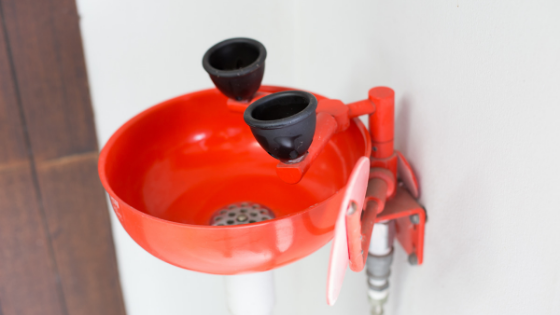Numerous industries face threats from hazardous materials. And while your workers are willing to accept some degree of risk as part of the territory, the safety of their eyes shouldn’t be up for negotiation.
After all, without their eyesight, your workers can’t do their jobs.
That’s where an eye wash station can help. Here are a few reasons why this little piece of equipment is so important to have in the workplace.
Protecting Your Employees’ Eyes
The single biggest reason behind having an eye wash station is obvious: protecting your employees’ eyes from harm.
The personal and economic toll of workplace eye injuries is alarming for workers and employers alike. And given that 20,000 workplace eye injuries happen every year, costing $300 million in lost productivity, healthcare costs, and worker compensation, you should be very concerned.
Partial or total loss of eyesight can be deeply traumatizing, physically and psychologically, especially if you’ve spent your entire life with eyesight. Your entire life can be derailed by one accident – you have to re-learn how to interact with the world, how to get around, how to negotiate a world you can’t see.
Depending on the work you do and the extent of the damage, you may not be able to go back to your old job again. On top of lost income, you’ll lose your coworkers, social and professional connections made there, and the part of your identity that was built around working that job.
The point is: accidents damaging your eyes can reroute your whole life. And you could avoid that uncharted territory with the proper preparations – including an eye wash station.
Location, Location, Location
In addition, when it comes to emergency situations, location is everything.
Think of it this way.
Let’s say an employee gets something flung in their eyes. Debris, hazardous chemicals, you name it.
The average ambulance response time is around eight minutes, but it can get as high as 30 minutes in rural areas, depending on how many ambulances are available, how far they have to travel, and how many calls they have to answer.
Assuming the ambulance makes it there in eight minutes, that’s still plenty of time for eye damage to become permanent.
Chemicals in your eyes may not cause permanent damage or even injury – as long as they’re flushed out immediately. Usually, your safest bet isn’t to break out the first aid kit – you should book it to a tap and flush your eyes as quickly as possible.
An ambulance has the tools to treat chemical burns, but unless an ambulance is already there, they won’t be able to respond fast enough.
Eye wash stations make all the difference between a few days of irritation and permanent injury to your eyes.
OSHA Requirements
Oh, and by the way, you’re legally obligated to have at least one, depending on your working conditions. Under OSHA’s 29 CFR 1910.151(c), appropriate medical services and first aid, including eye wash stations, must be provided for immediate emergency use in maintenance areas and electric storage battery charging areas.
While OSHA is vague on the location, purchase, and maintenance of such stations, ANSI/ISEA Z358.1-2014 is not. It provides in-depth guidance for the maintenance and minimum performance standards required of this equipment.
Because let’s face it. If an eye wash station is in terrible condition, it won’t actually do much of anything to protect your employees’ eyes.
Eye Wash Stations as Part of Safety Procedures
An eye wash station can make a huge difference in protecting your employees, but the fact is, it’s just one small part of a comprehensive safety program. Visit our blog for more tips on workplace safety policies and procedures.
